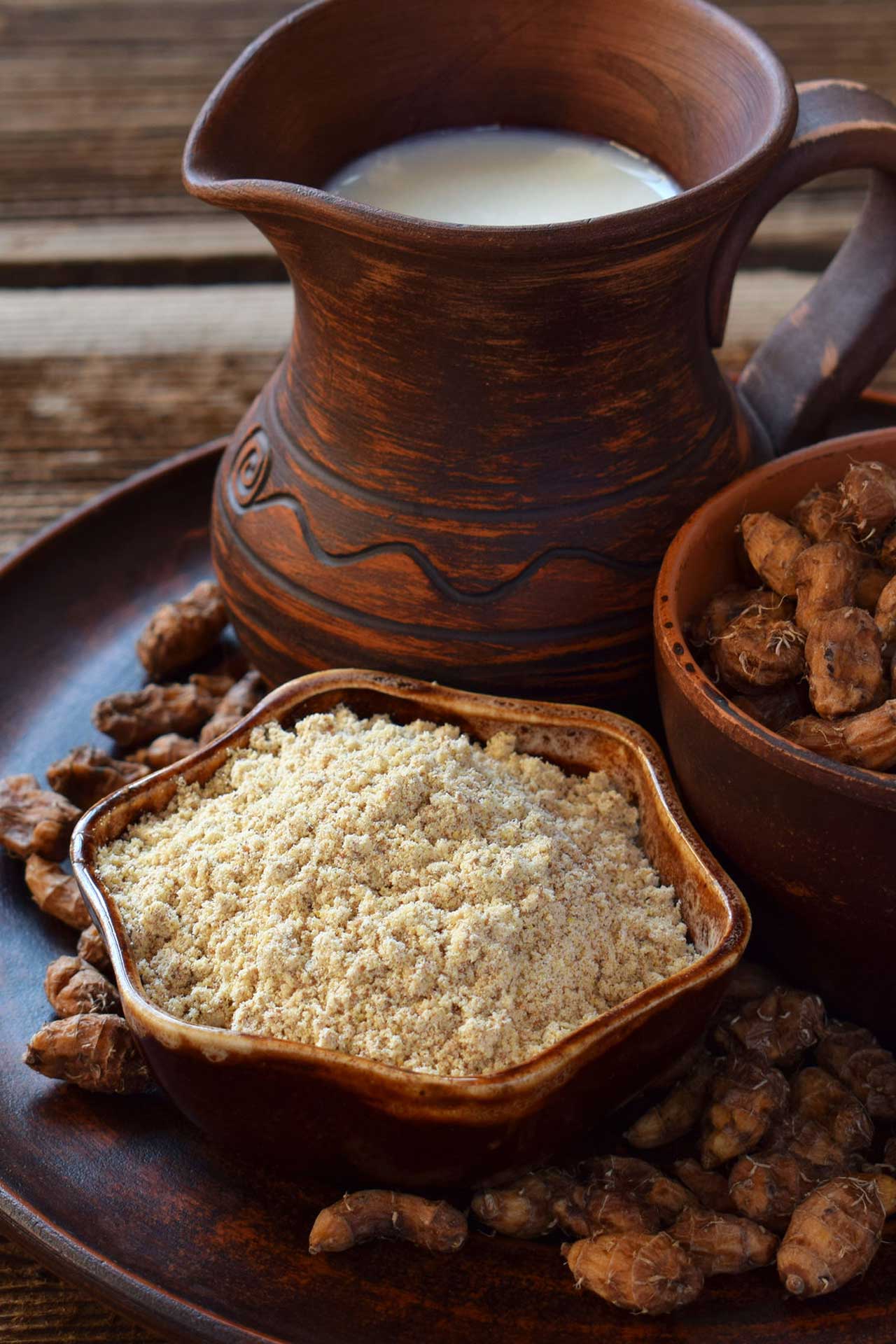A valuable African tuber
WHY CHOOSE TIGERNUTS
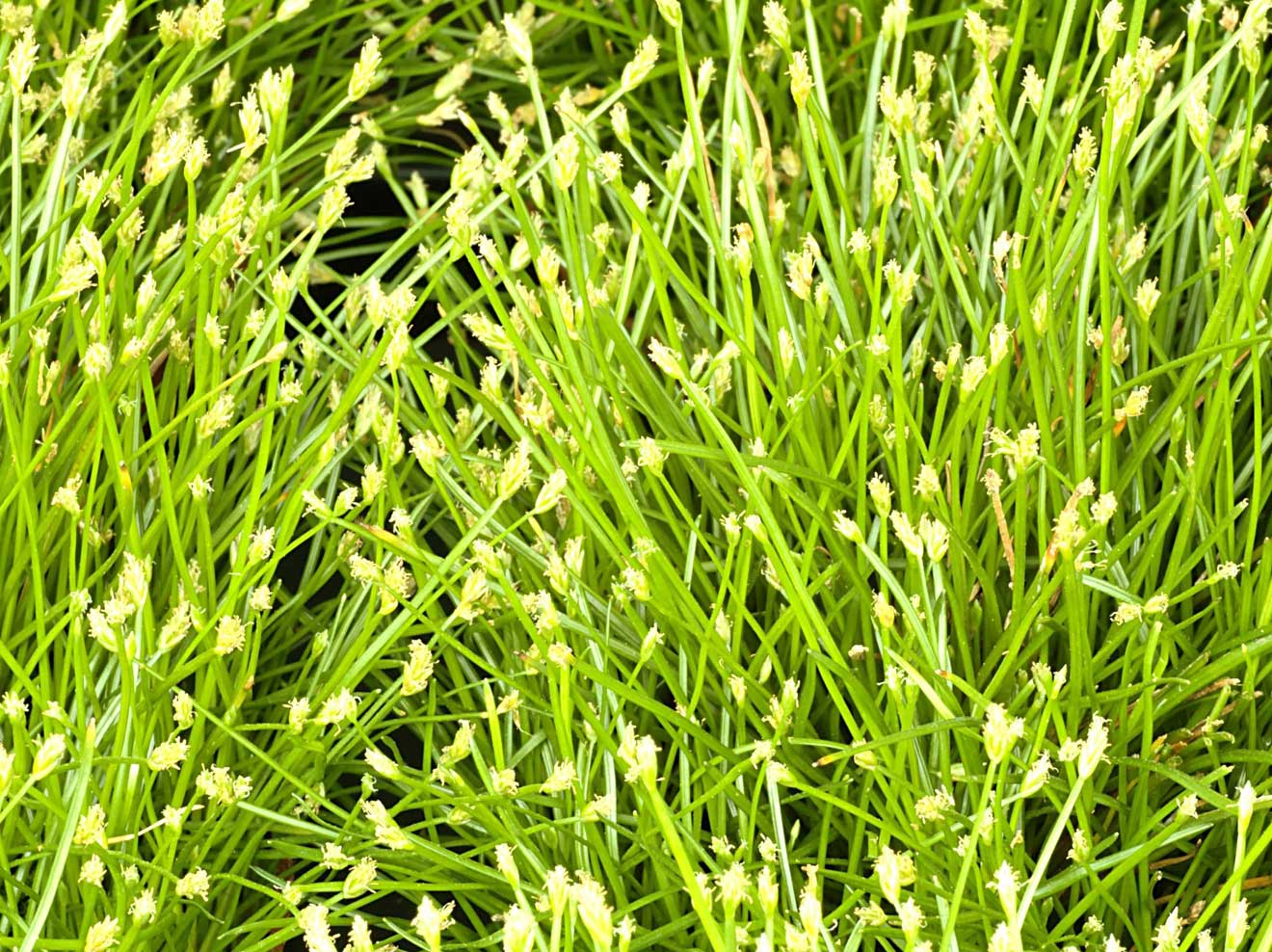
THE TIGERNUT IS A SUSTAINABLE, RESILIENT AND VERY NUTRITIONAL NATURAL PRODUCT
Tiger nuts, earth almond, chufa. Edible root tubers, naturally organic.
An easy crop, ripens in 3 months, grows under unfavorable conditions, can withstand drought as well as flooding and a soil temperature as low as -5°C. The tubers grow best in moist sandy soil.
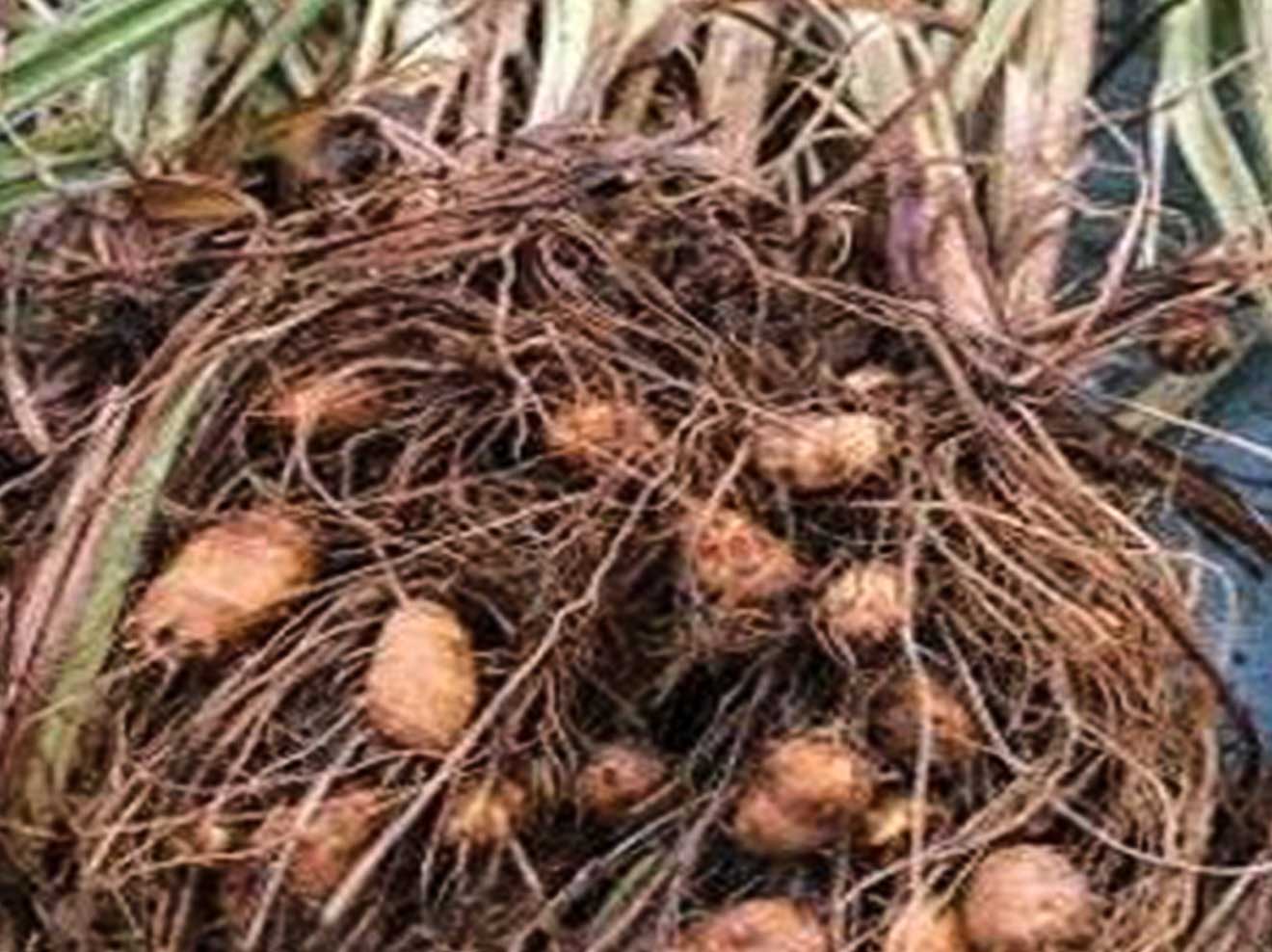
The tigernut belongs to the oldest cultivated plants in Egypt and is said to have been the first staple food for our paleo ancestors due to its valuable ingredients. Wild tigernut roots have been found north of Aswan in Egypt more than 10,000 years ago.
Today, tigernuts are important for the local African community and, as an export product, for their economy.
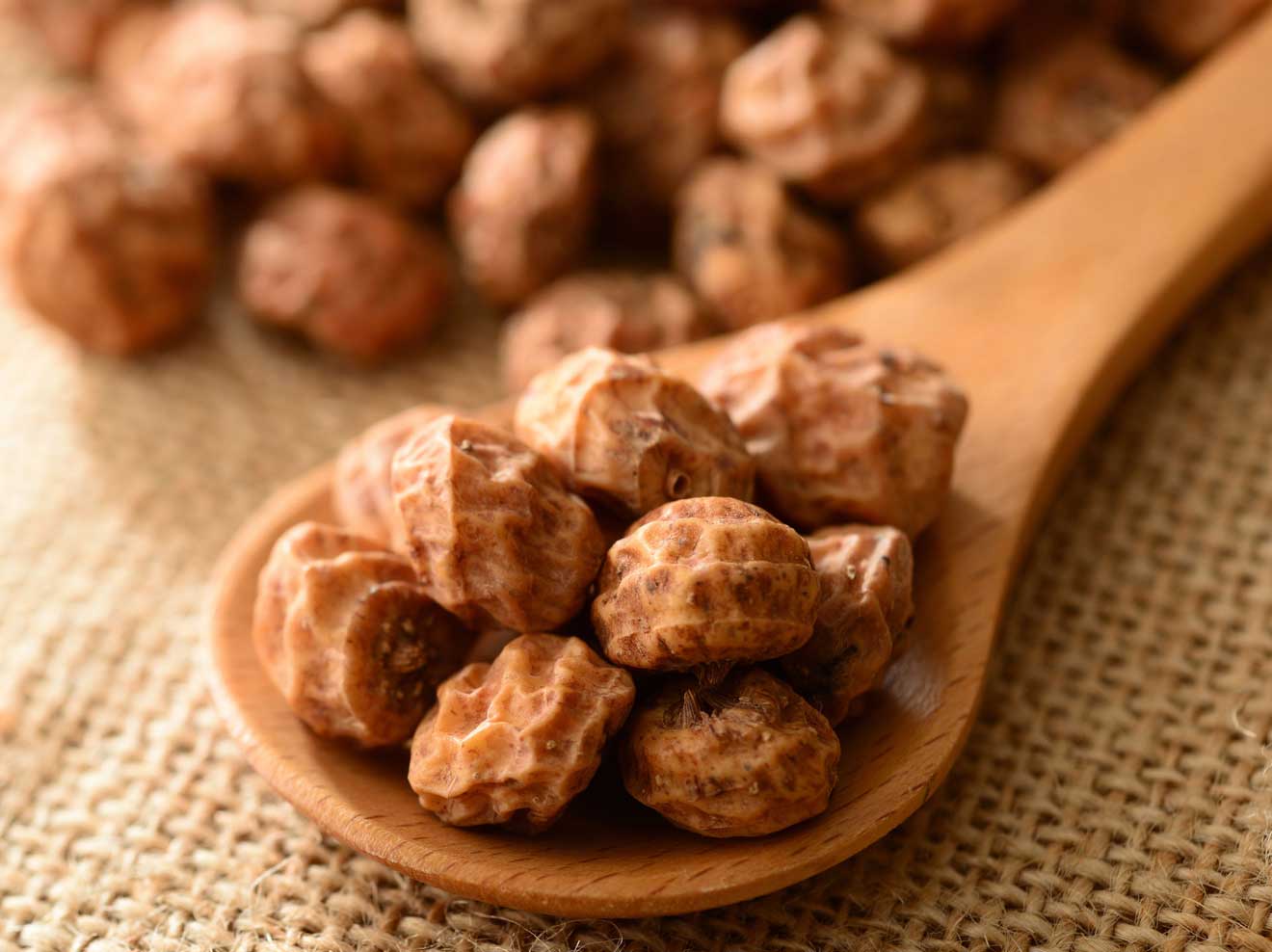
The harvest is in November or December. The nuts are washed with water and dried in the sun for several months. This is a delicate process in which humidity and temperature are important. The nuts are turned every day for even drying and a long shelf life. The nut shrinks, the skin wrinkles and takes on a hard texture.
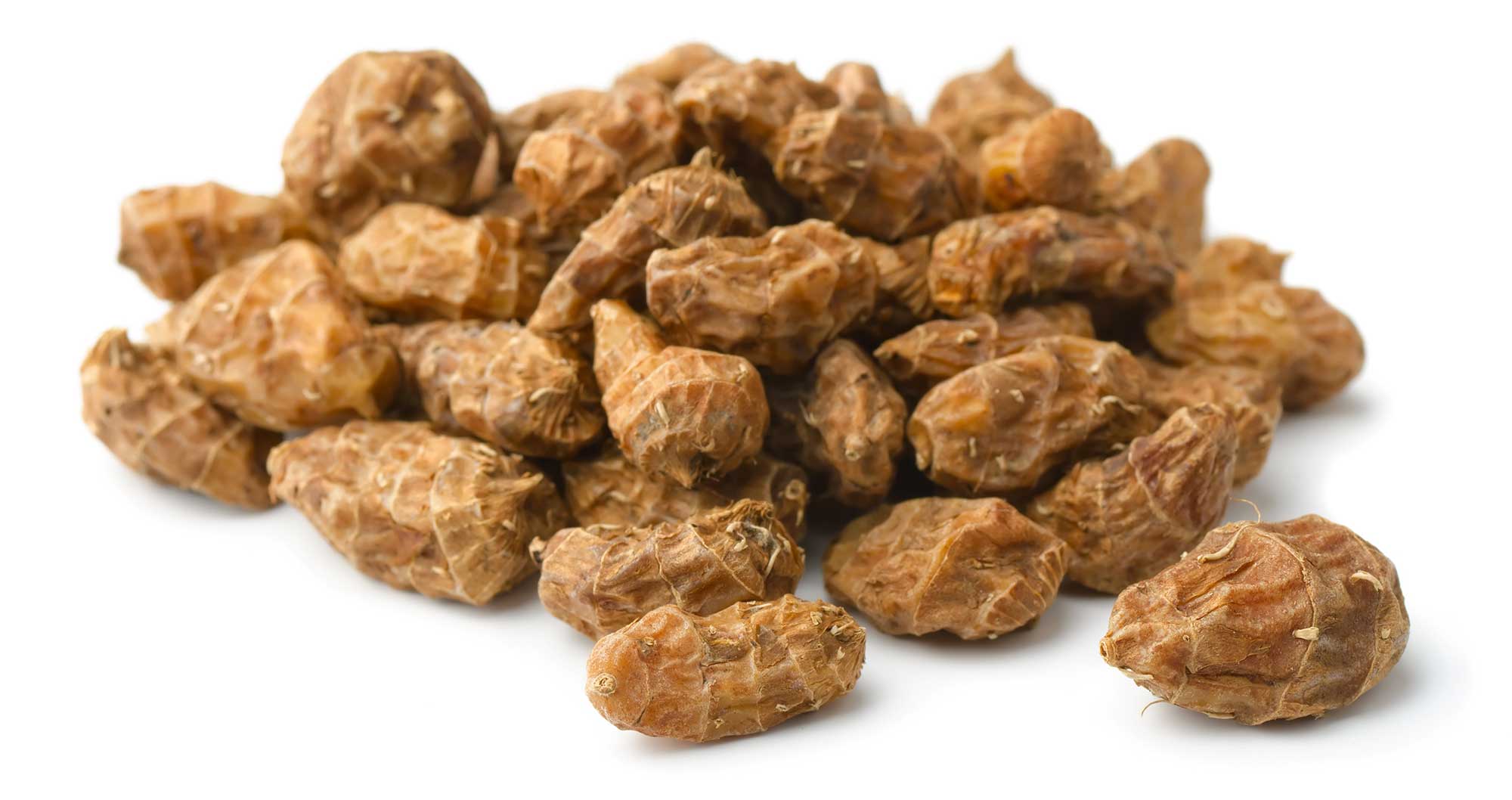
The SYMFONIO tigernuts comes from an organic project in Burkina Faso.
When harvesting the nuts, the leaves are removed first and then the roots with the valuable tubers
are removed from the ground with a fork or machine.
The women’s communities take care of the delicate process of drying and further processing.
Then they sell the products on the local market and the surplus as export,
providing a much-needed income in disadvantaged areas.
The Paranthropus boisei (the “Nutcracker” an evolutionary offshoot of Homo sapiens)is said to have lived on tigernuts, among other things, about 2 million years ago. In Egypt, Persia and the Chinese Empire, the nuts were used as medicine.


It is the women who carefully carry out the months-long process of drying the nuts in the sun and thus they monitor their quality. They take care of the organization, the local sales and the export, making them independent with an income for their families.
Tiger nuts are versatile and can be eaten as a snack or ground as flour for biscuits and other bakery products. It can also be used as a starch to make nougat, jam , beer or ice cream. And it can be used as an additive in smoothies and drinks. Horchata is a well-known drink made from tiger nut milk, an alternative to dairy milk. The milk can be fermented into yogurt. The oil is used for soap and cosmetics, but also for salads or for baking.
